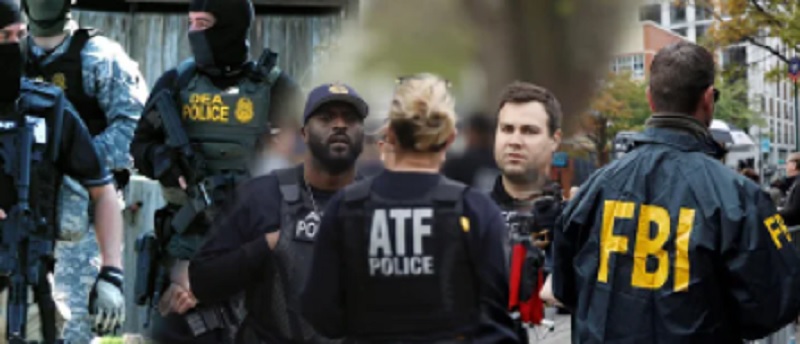
When in Washington D.C. or watching newsworthy events on television, it may be hard to keep up with what agency is attending to what event. The plain-clothes and secret agents with law enforcement tasks can’t always be spotted with the ubiquitous earphones and wrist microphones, but they are there!
In addition to Washington, D.C. Metropolitan Police with an authorized strength of over 3,400 (although dealing with many resignations and retirements creating a staff shortage) and the transit police of nearly 500, nearly every branch and unit of the federal government has its own police including the Supreme Court with its own uniformed police force. Even the Smithsonian Institute has an armed security force with special police powers.
Patrolling other areas of federal property and national monuments is the U.S. Park Police under the jurisdiction of the National Park Service within the Department of the Interior. Across the country park rangers, investigators, and even SWAT teams operate to protect persons on public lands. The U.S. Park Police number over 600 members and was instituted by President George Washington.
The U.S. Secret Service, most visibly by its uniformed division, keeps an eye on the White House and with human and technological resources protecting the perimeter and grounds. While famous for dignitary protection, the Secret Service was originally part of the Treasury Department and still retains its primary mission of protecting the integrity of our currency from counterfeiting and fraud. It is now under the umbrella of the Department of Homeland Security.
HSI, or Homeland Security Investigations, is a new major player in federal law enforcement. With broad mandates and resources, HSI targets a number of national security threats and criminal activity. The CIA, FBI (which also has a uniformed division), DEA, ICE, DIA, and others we probably aren’t supposed to know about, engage in covert activity in a city crawling with potential for espionage.
The Pentagon has the Pentagon Force Protection Agency with the Pentagon Police being the uniformed officers seen around the institution, with about 500 officers. Of course, the military law enforcement agencies have a presence as well. The military has Army and Marine military police as well as their criminal investigators (CID), Air Force Security Forces and Office of Special Investigations (OSI), and NCIS, the Navy’s investigative arm of television fiction fame. The Department of Defense Police are found on military installations as civilian counterparts to their military law enforcement.
Federal facilities are patrolled by the Federal Protective Service, another uniformed division of Homeland Security. Buildings that house federal agencies rely on the FPS. The Veterans Affairs Police are seen at VA facilities. The U.S. Marshals remain responsible for court security and, more famously, for pursuing fugitives from justice.
One example of the pooling of resources is dignitary protection. When high-profile officials travel, we expect that the Secret Service is staffing the VIP protection detail. During the presidential election months when candidates meet the threshold to be given federal law enforcement protection, agents from other departments are recruited. The plainclothes agent milling around in the crowd or wearing the dark suit and sunglasses might be from the Capitol Police, U.S. Marshal’s Service, or any of the other alphabet agencies.
Coordination among dozens of agencies during events that create the need for a massive law enforcement response is a challenge. When hundreds of thousands of marchers, millions of visitors, and occasional outbreaks or threats of violence, no single agency can bear the burden of maintaining law and order. On rare occasions, National Guard or federal troops may be authorized. Routine use of the military to engage in civilian law enforcement is prohibited by law. The United States has a unique separation from civilian and military law enforcement, an important aspect of freedom from federal oppression embedded in the Constitution and the Posse Comitatus Act of 1878.